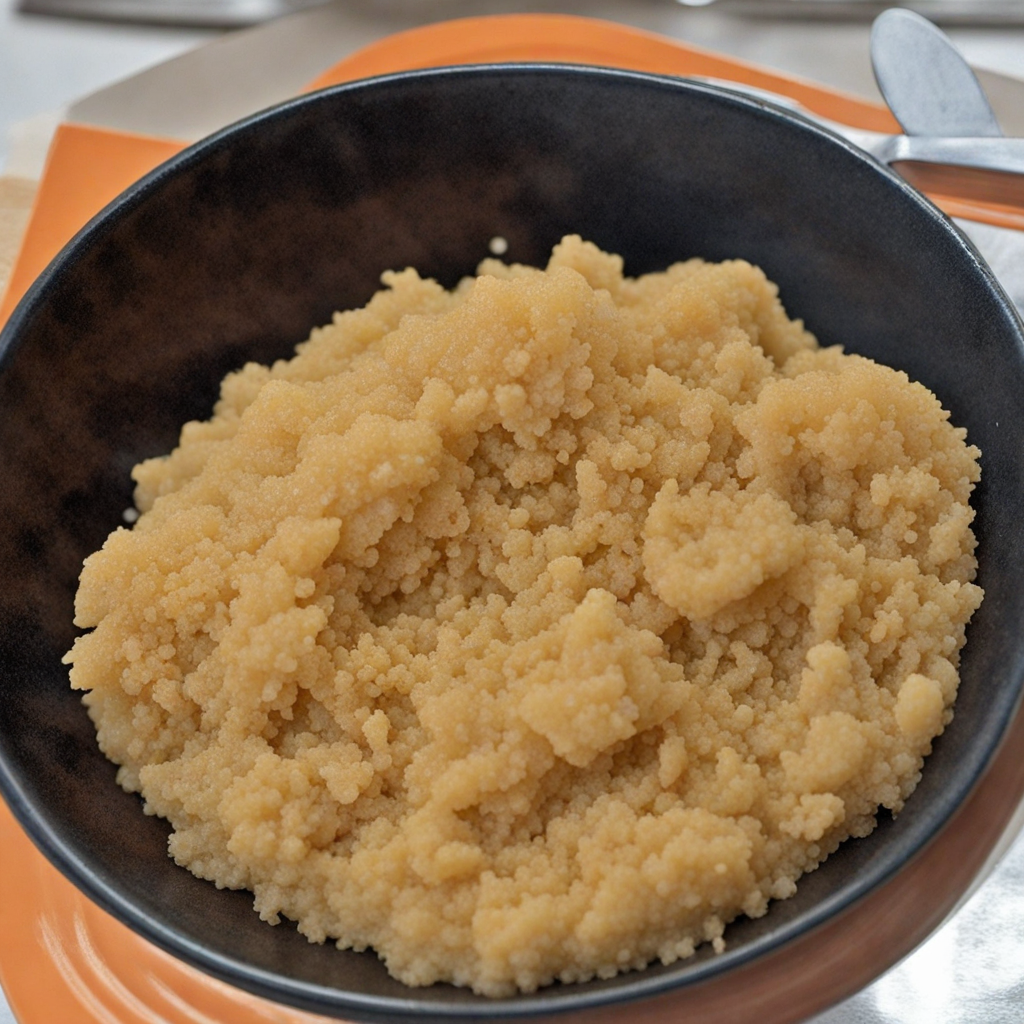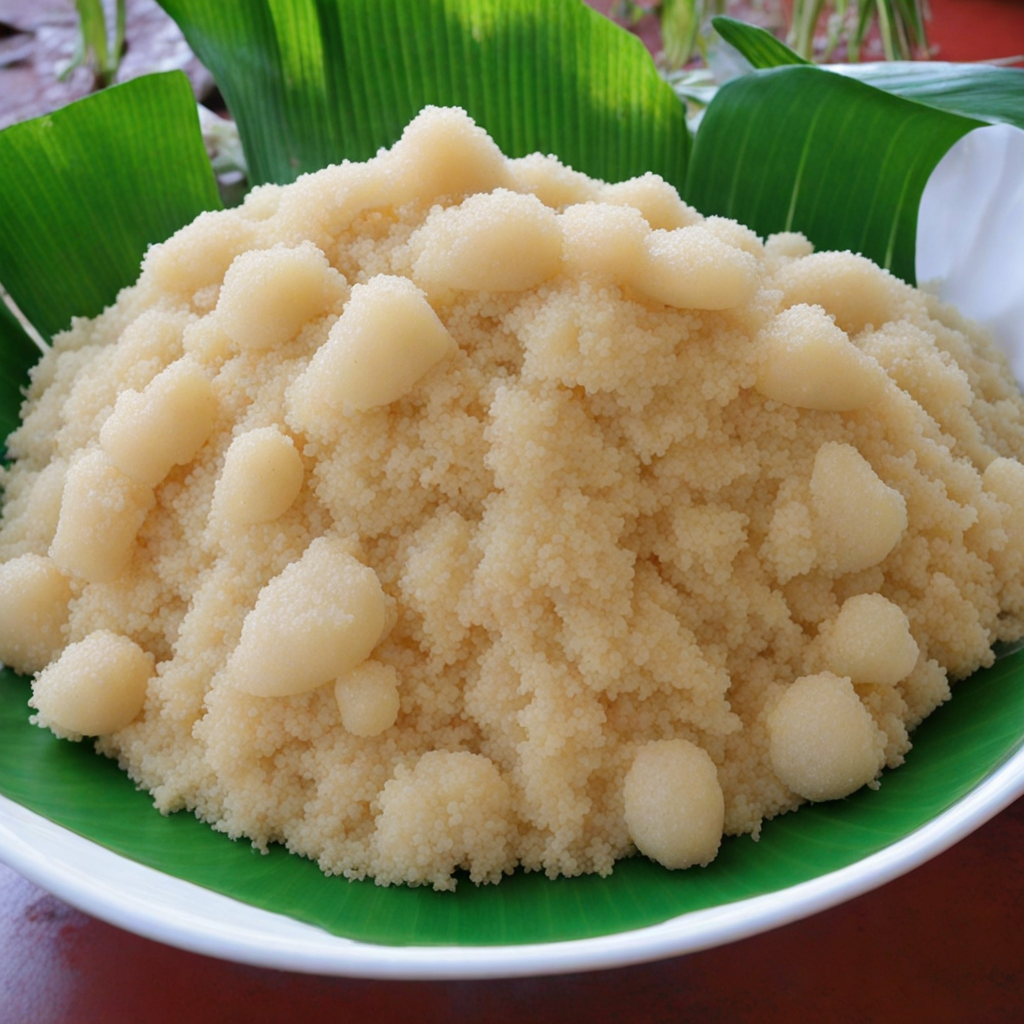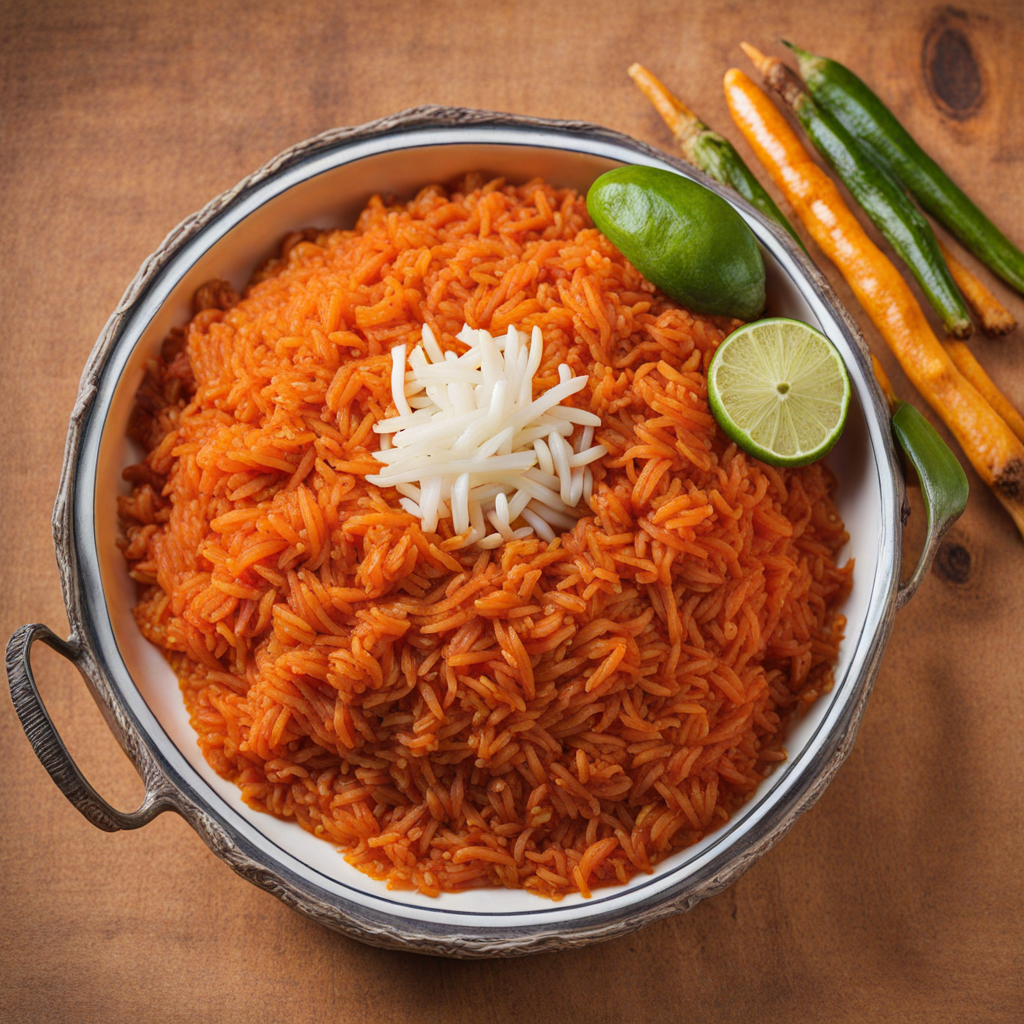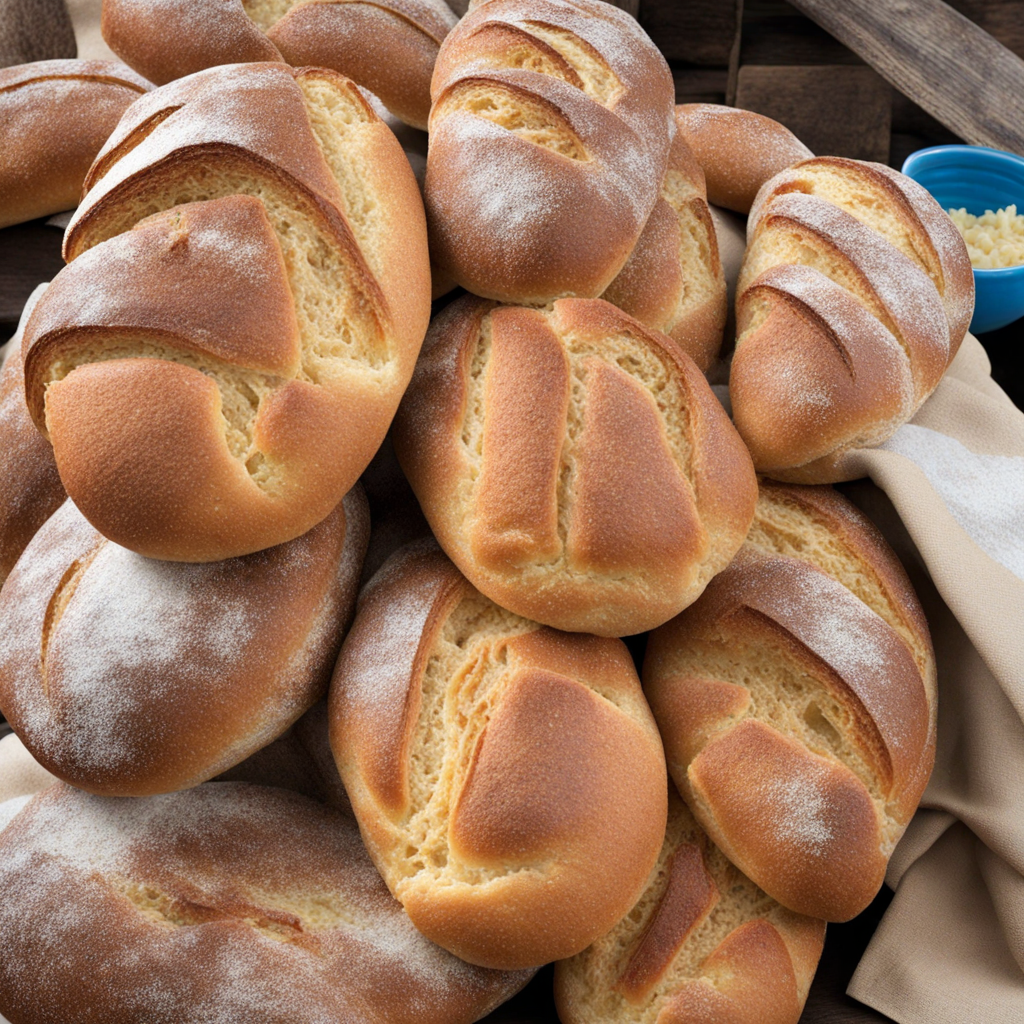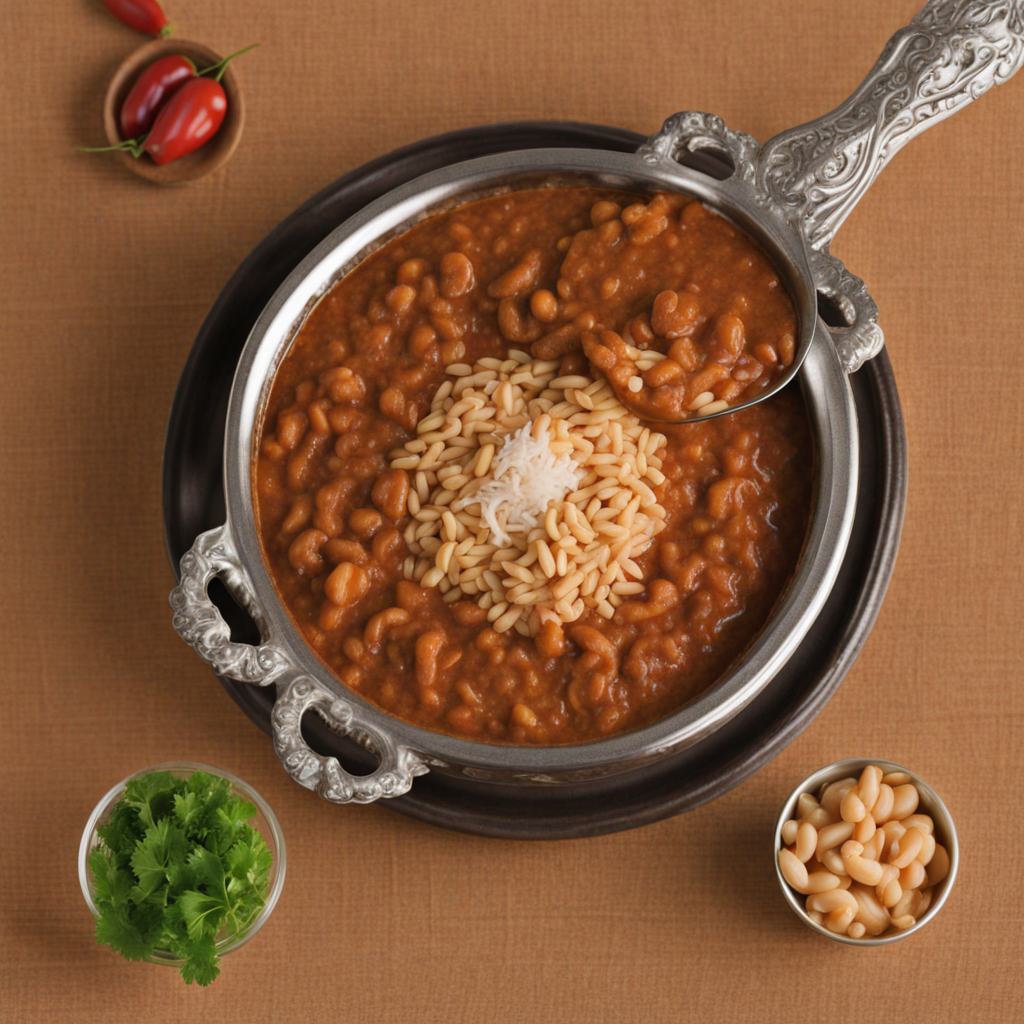Attieke
Attieke is a traditional dish from Guinea that showcases the country's rich culinary heritage. Made primarily from fermented cassava, this unique food undergoes a meticulous preparation process that transforms the root vegetable into a light, fluffy grain. The fermentation not only enhances the flavor but also imparts a mild tanginess, making Attieke a versatile base for various accompaniments. Its texture is reminiscent of couscous, providing a delightful chewiness that pairs well with a variety of dishes. Typically served as a side dish, Attieke is often accompanied by grilled fish, meats, or vegetable stews, allowing it to absorb the flavors from the main dish. The combination of Attieke with spicy sauces or marinated proteins creates a delicious harmony, as the subtle taste of the cassava balances the bolder flavors of the accompaniments. Additionally, it can be enjoyed cold, making it a refreshing option for a light meal or picnic, especially when combined with fresh vegetables and a zesty dressing. For those looking to explore the culinary landscape of West Africa, Attieke offers a delightful new taste experience. It invites food lovers to experiment with different pairings and toppings, from traditional spicy sauces to modern interpretations with fresh herbs and citrus. This dish not only serves as a testament to the resourcefulness of Guinean cuisine but also encourages a deeper appreciation for the diverse flavors that define the region's culinary identity.
How It Became This Dish
Attieke: A Cultural and Culinary Gem of Guinea Attieke, a traditional dish hailing from the Ivory Coast but popular in various West African nations, including Guinea, is a striking example of how food can serve as a cultural connector across borders. This fermented cassava dish, often enjoyed as a side or base for various meats and vegetables, is not just a staple in the diets of the Guinean people but also a symbol of their rich cultural heritage and communal identity. Origins of Attieke The roots of attieke can be traced back to the Akan people of the Ivory Coast, where it has been a dietary staple for generations. The dish is derived from cassava, a root vegetable indigenous to South America but brought to Africa through the transatlantic slave trade. As cassava became integrated into local cuisines, innovative methods of preparation emerged, leading to the development of attieke. The process of making attieke involves peeling the cassava, fermenting it, and then grating it into a fine texture. The fermentation process not only enhances the flavor of the cassava but also aids in preservation, which is particularly valuable in the humid climates of West Africa. Once fermented, the cassava is steamed and can be served either warm or cold. This unique method of preparation showcases the ingenuity of the West African peoples, who transformed an introduced crop into a culinary staple. Cultural Significance Attieke is more than just a food item; it is a cultural touchstone that embodies the communal and familial bonds of the Guinean people. It is often served during significant life events, including weddings, birthdays, and communal gatherings. The act of preparing attieke is typically a collective endeavor, bringing families and communities together, fostering a sense of unity and shared identity. In Guinea, attieke is commonly paired with grilled fish, chicken, or stews, making it a versatile accompaniment to many dishes. Its light, slightly tangy flavor profile complements a variety of proteins, making it a favored choice at celebrations and everyday meals alike. Additionally, attieke is often enjoyed with spicy sauces that enhance its taste and provide a burst of flavor, reflecting the rich culinary traditions of the region. Development Over Time As Guinea has evolved politically and economically, so too has the role of attieke within its society. The 20th century saw significant changes in the country, including colonization, independence movements, and the subsequent shifts in social structures. Despite these changes, attieke remained a constant in the Guinean diet, adapting as necessary to the evolving landscape. During the colonial period, the introduction of new agricultural practices and crops influenced local cuisines across West Africa. The French colonial administration in Guinea promoted cash crops, which altered traditional farming practices. However, cassava remained a vital crop for local communities, and the production of attieke continued to thrive. In many ways, attieke became a symbol of resistance against colonial influence, as it was a traditional food that asserted the identity and autonomy of the Guinean people. As Guinea gained independence in 1958, there was a renewed interest in indigenous foods and culinary practices. This period marked the revival of traditional dishes like attieke as a way to embrace and celebrate national identity. Culinary festivals and cultural events began to feature attieke prominently, showcasing the importance of the dish in Guinean culture. The globalization of food in the late 20th and early 21st centuries has also affected the perception and consumption of attieke. With increased migration and the spread of West African communities around the world, attieke has found its way into diasporic cuisine, becoming a beloved dish among West African expatriates. In cities with significant Guinean populations, attieke can be found in restaurants and homes, serving as a comforting reminder of cultural heritage. Contemporary Significance Today, attieke is more than a food; it represents resilience and cultural pride for many Guineans. As globalization continues to influence culinary trends, attieke has adapted to meet modern tastes while maintaining its traditional roots. Chefs and home cooks alike have begun to experiment with attieke, incorporating it into fusion dishes or presenting it in contemporary ways while still honoring its origins. In recent years, there has been a growing movement among young chefs in Guinea to elevate traditional dishes such as attieke. They are working to redefine how these foods are perceived, aiming to bring them into the spotlight of international cuisine. This effort not only helps preserve culinary heritage but also promotes the local economy through the use of local ingredients and traditional cooking methods. Moreover, attieke has found a place in discussions about food sustainability. As a product of cassava, which is drought-resistant and can thrive in poor soils, attieke highlights the potential of indigenous crops to contribute to food security in a changing climate. By promoting and consuming attieke, communities can support agricultural practices that are environmentally sustainable and culturally significant. Conclusion Attieke is a culinary treasure that encapsulates the history, culture, and identity of the Guinean people. From its origins as a product of fermentation to its role in communal gatherings and its evolution in contemporary cuisine, attieke serves as a reminder of the enduring power of food to connect people across generations and geographies. As it continues to adapt to modern influences while maintaining its traditional roots, attieke stands as a testament to the resilience and creativity of West African culinary heritage. Whether enjoyed in a bustling market in Conakry or a family gathering in the diaspora, attieke remains a flavorful embodiment of cultural pride and community spirit.
You may like
Discover local flavors from Guinea


